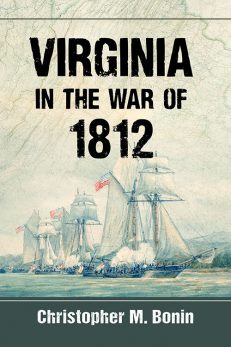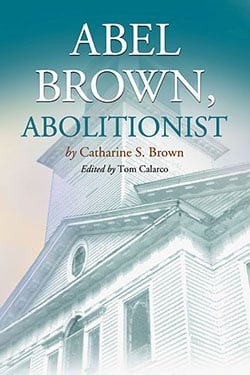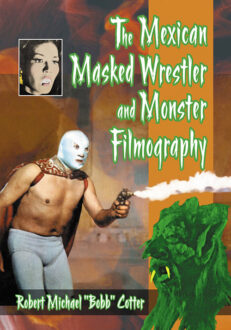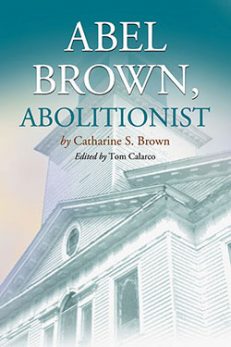Subtotal: $14.99
Abel Brown, Abolitionist
$29.95
In stock
About the Book
Abel Brown was born November 9, 1810, in Springfield, Massachusetts, and moved with his parents to New York State at age 11. As a young man, he entered the Christian ministry and soon felt called to action in the abolitionist movement. Brown was an eloquent voice crying out against slavery, publishing letters and reports in The Liberator and other periodicals with abolitionist leanings, as well as in his own paper, The Tocsin of Liberty (later The Albany Patriot). The founder and corresponding secretary of the Eastern New York Anti-Slavery Society, he traveled widely, preaching the message of abolition, often accompanied by fugitive slaves.
Brown’s death one day before his 34th birthday was a blow to New York’s abolitionist movement and devastating for his wife, Catharine, who published this biography in 1849 as a way of keeping his memory alive. The work draws heavily on Abel Brown’s correspondence, journals, and newspaper articles, allowing him to tell the story in his own words. This newly edited version preserves the 1849 original while offering clarification and context. The result is an unusual first-hand look at America’s anti-slavery movement. Appendices contain excerpts from additional correspondence and sermons of Abel Brown.
About the Author(s)
Bibliographic Details
Catharine S. Brown
Format: softcover (6 x 9)
Pages: 238
Bibliographic Info: 34 illustrations, appendices, notes, index
Copyright Date: 2006
pISBN: 978-0-7864-2378-1
Imprint: McFarland
Table of Contents
Preface 1
Notes on the Editing 7
Introduction 9
I. His descent—Birth—Natural activity and love of business—His Guardian Sister—His experience of a new life—and choice of Profession 11
II. Family Letters—Christian Experience 14
III. Studies Divinity at Hamilton—Continuation of Correspondence with his Sister—Letter to his Parents and Brother 21
IV. Second year at Hamilton—His Practical Efforts in the Cause of Sabbath Schools—Missionary Letters—Journal 29
V. Continuation of Letters and Journal—Third year at Hamilton—The Mission Family 37
VI. Labors in Western and Central N. Y. for the promotion of Sabbath Schools—Leaves Hamilton and studies at Homer—Becomes a Lecturing Agent in the Cause of Temperance 45
VII. Preaches at Westfield, N. Y.—Trials and Persecution—Is publicly whipped, &c.—Labors in Pennsylvania—Lectures in behalf of the American Anti-Slavery Society—An Epistolary Address to Senior Class of Hamilton Institution 63
VIII. Settlement at Beaver—Receives Appointment of Agency from the A.S. Society of Western Pennsylvania—Persecution—An attempt to throw him into the River Ohio—“Delivers the Spoiled from the Hand of the Spoiler”—Efforts to advance the Cause of the Slave in his own Denomination 72
IX. Receives Appointment of Agency for the Western Education Society—Leaves Pennsylvania—Visits Massachusetts—Continues to Labor in the Cause of the Slave 81
X. Commission from the Massachusetts Abolition Society—Settles at Northampton—Private Correspondence—Death of his Sister—Letter to C. P. Grosvenor 85
XI. His Anti-Slavery Position—The Political Contest—Correspondence—Leaves Northampton—Subsequent Settlement at Sand Lake, N.Y.—Continuation of Letters 91
XII. Removal to Albany—Labors in behalf of Refugees—Engages as Publisher of the Tocsin of Liberty—Formation of the Eastern N.Y. Anti-Slavery Society—Fugitive Slave cases 106
XIII. The Slave Hunter—Scenes of Outrage—Rights of Colored Citizens invaded—No Legal Redress—Interference of Mr. Brown in behalf of the injured—Consequent Indictment—Proposition to Lecture—Mob Elements Combined—Mr. Brown is burned in Effigy, &c.—Clay Indictment—Circular—Explanatory Statements—Indefinite Postponement of Trial 121
XIV. Scenes of Domestic Affliction—Death of his Wife—the two White fugitives—Report of Vigilance Committee—Lewis Washington, the Fugitive Slave Lecturer—Mr. Brown visits Massachusetts—Our first Acquaintance—Correspondence 135
XV. Visit to New York—Subsequent Marriage—Anniversary of the Eastern N.Y.A.S. Society—City Association in behalf of the oppressed—Labors in New York—Convention in New Jersey—Phrenological Character of Mr. Brown given by O.S. Fowler 146
XVI. The Slave Musician—A Western Tour—Letters—Visits Massachusetts—Return to Albany—Continuation of Efforts in behalf of the Slave—Mr. Brown’s Political Views—His continued interest in the Temperance Cause—Letter to the Mayor of Albany 152
XVII. Letters—Anniversary of Eastern N. Y. Anti-Slavery Society—Mr. Brown visits Western N.Y.—Labors for the Cause in various counties—Riotous scenes in Troy—My own personal Observations of his views and character 178
XVIII. The Family Circle—The Visit of Alvan Stewart—His Letter—Our Parting—His last Journey for the Slave—His Visit at Rochester—Free Mission Meeting—The last Letters—His Sickness and Death—Correspondence of the Mosher Family—Effusions of Grief—Funeral Services—An Obituary Notice—Resolutions—Monumental Inscriptions—Conclusion 201
Appendix I: Excerpt from “Impressions and Incidents Connected with the Life of Rev. Charles B. Ray” 217
Appendix II: Excerpt from Reply of C.S.B. Spear of Passaic, N.J., to Wilbur Siebert 220
Index 223
Book Reviews & Awards
“a new edition with annotations and illustrations that shed more light on a key founder of Albany’s Underground Railroad…new insights…very unusual to find a firsthand account from that period…real, authentic view about someone who was involved in the Underground Railroad”—TimesUnion.com; “Abel Brown is important because he established the Eastern New York Antislavery Society, two abolitionist newspapers, and the Albany Vigilance Committee that aided fugitives—all significant contributions in the struggle against slavery”—Stanley Harrold, South Carolina State University; “Very unusual to find a firsthand account from that period…real, authentic view about someone who was involved in the Underground Railroad”—Paul Stewart.

 Virginia in the War of 1812
Virginia in the War of 1812 




